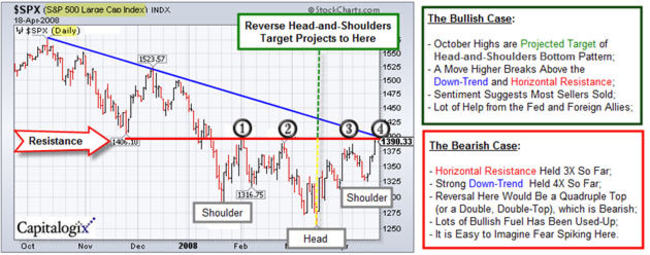
We’ve talked about the "line in the sand" (where the bulls and bears are battling at the 1400 level in the S&P 500 index). Well, at the end of this week, we’re still at the same place.
The emotional momentum of last week has faded some, however the market held up nicely in the face of additional bad news this week. From my perspective, that’s a positive sign.
I expect a bunch of smaller traders to short the 1400 level into Tuesday’s Fed meeting. It seems like a safe trade. So, while a "correction" downward wouldn’t surprise me here; I am not bearish. In fact, I think a move above that level would trigger a rash of buying (both organic and short-covering) … and is thus more likely.






